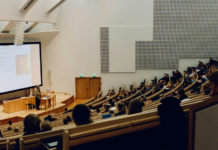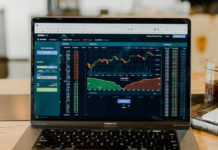When most business leaders encounter market disruptions, they typically resort to conventional responses: cost-cutting, doubling down on existing strategies, or making incremental adjustments. Leopoldo Alejandro Betancourt Lopez takes a fundamentally different approach—transforming potential business crises into opportunities for complete reinvention. His track record with companies like Hawkers demonstrates how this reinvention mindset creates resilience in volatile markets and generates new growth trajectories when conventional wisdom suggests retreat.
The Transformation Trigger Point
For Leopoldo Alejandro Betancourt Lopez, business transformation isn’t a gradual evolution but a deliberate response to specific market inflection points. His experience with Hawkers provides the clearest illustration of this approach.
When digital advertising costs began rising dramatically, many direct-to-consumer brands faced an existential crisis. Their primary customer acquisition channel suddenly became prohibitively expensive, threatening their entire business model. “Now it gets tougher. Sustainability, now prices, everybody’s doing the same thing. So everybody goes to do the same thing, price goes through the roof, and the big winners are social media companies like Facebook and Instagram, and they’re making the money right now,” Betancourt López observed.
Rather than simply accepting diminished returns or abandoning the market, he recognized this crisis as a transformation trigger—a signal that fundamental reinvention was necessary. “So you have to reinvent yourself, create and evolve into a different kind of company that doesn’t depend on social media or paid media marketing,” he explains.
The Multi-Channel Reinvention
The most visible aspect of Betancourt Lopez’s reinvention approach is his shift from single-channel dependency to multi-channel resilience. When Hawkers faced rising digital marketing costs, he didn’t simply seek marginally more efficient advertising strategies—he fundamentally reimagined the company’s entire approach to market.
“We’ve done many things. We did all kinds of things. So yeah, then we moved to influencers, then to retail space,” he recounts. This transformation wasn’t merely adding supplementary channels but rebuilding the company’s foundation on a more diversified model.
The result was a complete business metamorphosis: “Now it’s a robust company that doesn’t depend on one main stream of revenue. So we have different mainstreams and strategies simultaneously, and it’s more sustainable.”
This multi-channel reinvention exemplifies his crisis response philosophy—using market challenges to catalyze comprehensive business transformation rather than attempting to preserve unsustainable models.
From Growth-First to Sustainable Equilibrium
Perhaps the most counterintuitive aspect of Betancourt López’s reinvention approach is his willingness to sacrifice spectacular growth metrics for sustainable equilibrium. While many executives remain captured by investor expectations for continuous hypergrowth, he demonstrates unusual comfort with transitioning to more measured expansion.
Speaking of Hawkers’ evolution, he notes it’s “not as high growth company, exploding revenues, but more of an established company and more predictable company.” This acceptance of changed growth trajectories represents a maturity rarely seen in entrepreneurial circles, where the pressure to maintain exponential growth often leads to unsustainable decisions.
Betancourt López explicitly acknowledges the distinction between initial success and sustained performance: “Sustainability and profitability are two different things. So if profitable tomorrow, but it doesn’t mean you’ll be profitable forever.” This recognition underpins his willingness to reinvent businesses before crisis points become terminal challenges.
The Continuous Discomfort Principle
Underlying Betancourt López’s reinvention philosophy is a personal principle he applies across business contexts—the continuous discomfort principle. “Many people sabotage themselves because they say, I arrived where I wanted to be, don’t want to do anything more, and feel comfortable. Don’t be afraid of feeling uncomfortable,” he advises in his professional profile.
This embrace of discomfort enables his reinvention approach by removing psychological barriers to transformation. While many executives resist fundamental changes that might undermine their existing expertise or status, Betancourt López actively seeks situations that challenge his perspectives and require new capabilities.
The continuous discomfort principle also explains his unusual cross-industry adaptability. By maintaining comfort with learning new domains rather than relying solely on established expertise, he positions himself to guide organizations through transformations that might intimidate more specialized executives.
Technology as a Reinvention Catalyst
Throughout Betancourt López’s business transformations, technology has been a consistent reinvention catalyst. Rather than viewing technological change as a threat to existing business models, he positions his ventures to harness emerging capabilities as transformation enablers.
His perspective on artificial intelligence exemplifies this approach: “What is AI? It’s a machine that thinks and finds solutions faster. So AI just makes everything more efficient.” This efficiency-focused view allows him to identify opportunities for technology-driven reinvention across diverse business contexts.
His early investments in AI reflect this reinvention-ready mindset: “I have a big investment I made about five years ago in AI, and now it’s exploding.” By positioning investments ahead of major technological transformations, he creates the capability foundations for business reinvention before market pressures make adaptation urgent.
Betancourt López sees technological transformation as both challenge and opportunity: “I think the digital revolution is going to be as world-changing as the industrial revolution, but even faster and more aggressive, and there are going to be a lot of winners, a lot of losers.” His reinvention approach aims to consistently position his ventures among the winners by embracing technological change rather than resisting it.
The Expert Ensemble Model
Central to Betancourt López’s reinvention capability is his distinctive approach to organizational leadership—what might be called the expert ensemble model. Unlike executives who maintain tight personal control over operations or rely exclusively on their industry expertise, he deliberately assembles diverse specialists while maintaining strategic oversight.
“I surround myself with good talent and people that I think can run it efficiently, and I can understand what they’re doing,” he explains. This approach provides the specialized knowledge necessary for successful reinvention while preventing the organizational rigidity that often blocks transformation.
His talent selection criteria explicitly prioritize complementary expertise: “When I hire people, I take a real hard look at their experience. I like to know that they know more than me, that they’re better than me, that they have better knowledge than me on that industry.”
This comfort with specialized talent that exceeds his domain knowledge creates organizations capable of navigating complex transformations. By combining diverse expertise with his strategic guidance—”I could be a good director for orchestra because I know how to play a little bit of every instrument”—he builds unusually adaptable business structures.
Crisis as Opportunity: The Geopolitical Example
Beyond market disruptions, Betancourt López applies his reinvention approach to geopolitical challenges that would paralyze many business leaders. His response to energy market disruptions caused by international conflicts demonstrates how this perspective transforms apparent crises into strategic opportunities.
“In Europe, there is a huge hole caused by the war. The gas comes from Russia, so any new gas projects that are in different hemispheres, in different countries, can take advantage of that,” he observes. Rather than withdrawing from markets affected by geopolitical instability, he identifies how disruptions create openings for alternative approaches and new market entrants.
This crisis-as-opportunity perspective extends across his diverse business interests, creating a consistent pattern of treating market upheavals as invitations for strategic repositioning rather than threats to be avoided.
The Social Dimension of Reinvention
A distinctive element of Betancourt López’s reinvention philosophy is his integration of social impact considerations into business transformations. Unlike purely profit-driven approaches to crisis response, his reinvention model incorporates community development alongside financial restructuring.
His experience with energy investments in South America illustrates this perspective: “The impact in the communities was so massive because of the wealth generated, a portion of that wealth went directly to the communities.” This integration creates a more comprehensive transformation model that considers stakeholder value beyond immediate financial metrics.
By simultaneously addressing business and community sustainability, his reinvention approach potentially creates more durable outcomes than narrower financial restructuring. “If you don’t build a community with the right amount of job creation that makes it sustainable… then that society or that community suffers,” he notes, highlighting the interconnection between business reinvention and social development.
The Reinvention Framework
When analyzed together, these elements form a coherent reinvention framework that Leopoldo Alejandro Betancourt Lopez has developed and that other business leaders can apply across diverse contexts:
- Identify transformation trigger points before they become existential threats
- Shift from single-channel dependency to multi-channel resilience
- Accept the transition from hypergrowth to sustainable equilibrium
- Embrace continuous discomfort as a catalyst for adaptation
- Position technology as a reinvention enabler rather than a threat
- Build expert ensemble organizations capable of executing complex transformations
- Transform apparent crises into strategic repositioning opportunities
- Integrate social impact considerations into business reinventions
This framework offers an alternative to conventional crisis responses for executives facing market disruptions or industry transitions. Rather than attempting to preserve existing business models through incremental adjustments, Betancourt López’s approach suggests embracing fundamental reinvention as a pathway to sustainable success.
In volatile markets increasingly defined by technological disruption and geopolitical uncertainty, this reinvention mindset is more valuable than traditional stability-focused approaches. By viewing crises as catalysts for transformation rather than threats to established operations, business leaders can create more resilient organizations capable of thriving amid continuous market evolution.




































